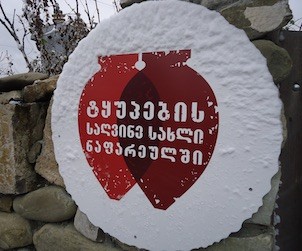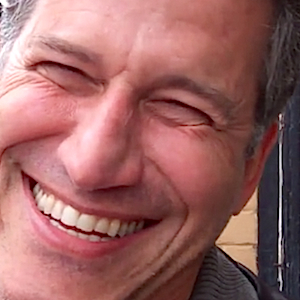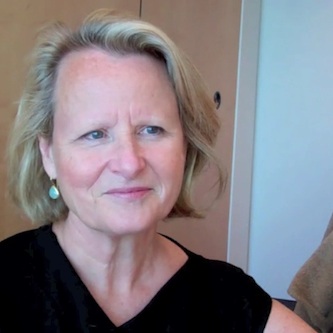Malcolm Jolley talks to author Kevin Begos about ancient grape varieties and his book Tasting the Past.

Journalist and author Kevin Begos has just published Tasting The Past: The Science of Flavour & the Search for the Origins of Wine, a book that takes the reader across the Middle East, Europe and North America to meet scientists, archaeologists and winemakers, who study or make the wines of the past, present and future. Begos, an oenophile in his own right, began the journeys that culminate into Tasting The Past when he tasted, by accident, a wine made by a monastery near Bethlehem in Palestine, which piqued his cusriosity about wine in Biblical times and the origins of both the actual grapes used then and now, and wine culture through the ages. Begos has been, as is, both a foreign correspondent and science journalist, and has the newsman’s knack of making complicated ideas digestible, without oversimplifying them. The result is a highly readable and fascinating informative book that ought to be a must read for any self-respecting wine nerd.
I spoke to Kevin Begos about Tasting The Past recently by telephone to conduct the interview below.
This interview was edited for length, clarity and style.
Good Food Revolution: I really enjoyed your book, it’s fantastic. I know some of the people in it, and have been to a few of the places that you go to, like Georgia and Sicily and tried the indigenous grapes. Anyway, in the book you say that that it all came to be because you decided to open a strange bottle of wine in a hotel room in Amman, Jordan. Can you take us through that?
 Kevin Begos: Absolutely. It was a real accident. I was not expecting to find interesting wine in Amman. You know, it was my bad for having a mistaken impression of wine in history. But yes it was a red wine from the Cremisan Monastery in Bethlehem, and I had not heard of Cremisan or even the grapes they were using. I later found out the wine was made of Middle Eastern grapes such as Baladi, Dabouki, Jandali and Hamdani. So that just set me off on a search to figure out what these grapes were.
Kevin Begos: Absolutely. It was a real accident. I was not expecting to find interesting wine in Amman. You know, it was my bad for having a mistaken impression of wine in history. But yes it was a red wine from the Cremisan Monastery in Bethlehem, and I had not heard of Cremisan or even the grapes they were using. I later found out the wine was made of Middle Eastern grapes such as Baladi, Dabouki, Jandali and Hamdani. So that just set me off on a search to figure out what these grapes were.
It opened my eyes to the biodiversity issues and human sustainability issues that I hadn’t associated with wine. I confess that I had mostly only thought of French and Italian wine grapes, when I thought of wine. I knew they were Greek wine grapes too but I didn’t know about the whole Middle Asian and Middle Eastern history of domestication.
Good Food Revolution: Let’s talk about that history a little bit. Certainly if you go to Georgia they’ll let you know that they’re they’re convinced that this is where wine was invented, and you better not bring up that the Armenians and the Persians also have a claim on it. But, in any event, the general idea is that that the grapes that human beings grow to make wine from came from the Caucasus and then migrated westerly across the Mediterranean, right?
Kevin Begos: That’s Right. Both westerly and then also northward up through Europe often through the river valleys of the Danube, the Rhône and the Rhine. You can actually trace the DNA, and that part of the story fascinated me. It’s just like what you can do with the genealogy of your own family, the DNA of grapes has a genealogy and it shows where different varieties split off and combined with local vines, which ones are older and which ones are younger. So the Georgians do, in fact, have some DNA evidence to back up their claims. It’s not just their pride in the region.
Good Food Revolution: The publication of Tasting The Past is good timing, then, in the sense that we’re just at the point where we can map grape genome. At the same time, there is a growing interest in indigenous grapes – certainly among growers and winemakers in Europe.
Kevin Begos: You know it’s it’s definitely a growing movement from people all over Europe and the Middle East, that’s now going back to 10 or sometimes even 15 years ago. And the Wine Grapes book by Jancis Robinson and José Voulliamoz really helped when it came out in 2012-2013, listing over 1,300 varieties.
I think the movement towards indigenous grapes is just starting here in America. Of course, there’s the Slow Food movement that has been here for years. And there is the craft beer and the craft distilleries movements, but wine makers here I think are a little late in realising that there may be a lot of possibilities with our hybrid grapes that use some of the Native American DNA crossbred with European. Of course, that is still contentious.
Good Food Revolution: Well, we certainly still make hybrid grape wines here in Ontario and actually some of them to make quite decent wines. But but they can be also a bit of a acquired taste, if you know what I mean.
Kevin Begos: Sure, I felt that way for a long time, but Deirdre Heekin’s wine from Vermont kind of changed my mind. She’s using some of these hybrid grapes that came out of the University of Minnesota; cold hardy hybrids. I think it speaks to the importance of the winemaker’s skill, that she did change my mind. Deirdre spent a lot of time in northern Italy learning about wine culture there and food culture there.
Her wine, made of these hybrid grapes, I think in most blind tastings you might not guess where it’s from but you wouldn’t say Vermont. You know it’s really a classy wine and you know a number of other wine critics agree: tough and experienced people like Eric Asimov from the New York Times and the writer Alice Feiring.
Good Food Revolution: OK, but it’s not all just grapes and winemakers, you have a chapter on that elusive concept of terroir, how does that all fit in?
Kevin Begos: Well, we know clearly that terroir is a lot more than just the soil, but that’s not to say that the soil isn’t important. I mean of course good soil is important for any vine or fruit or vegetable. Any of us that have a garden know that. But the flavors in wine clearly don’t come directly from the soil; what we call the ‘mineral’ flavours. There’s even some early evidence that some of the flint-like flavours in wines come from yeast and the fermentation process. And now we know the whole microbial community in the soil also clearly makes a difference to taste. I quote one of the California studies that found unique microbial microbial environments in different California wine regions that affect how the vines grow. That’s a big part of it because the grape genome has tremendous flavor resources but how those genes express those flavours (or not) is going to come out of the local growing conditions, as well as the winemaker’s skill.
Good Food Revolution: One of the things that I like about your book is at the end of every chapter you have some information about where to find some of the wines you’ve written about, or even other producers to try. What about you? Are you drinking wine in a different way than you did before you started writing Tasting The Past?
Kevin Begos: Oh, completely. I confess I had been a French, Italian and some Spanish lover for all of my life until five or ten years ago. This has just expanded my horizons and I’m embarrassed it took me so long for it happen. But, you know, we just didn’t have the same wine traditions here in America. Italy always had its native wine regions and you could go to the different parts of Sicily or Northern Italy and try different wines made from different grapes.But that’s a fairly new idea for a lot of American wine drinkers. I think the sommeliers, the really trained professionals, have known about the other grapes for a while but the public is just catching on. There’s so many types of wines to experience, like the qvervi wines from Georgia. That was a real revelation to me. You know that all those early wines for the first three four or five thousand years were made in a completely different style; not in oak barrels, not in barrels at all.
Good Food Revolution: That brings up an interesting question, which is about technology. Didn’t the Romans in France just start using oak because they had it? Should modern winemakers use whatever technology is at hand too?
Kevin Begos: I try to make the point that we’ve influenced grape evolution pretty heavily for 8,000 years by increasing berry size and choosing particular flavors. But now, we’re entering a whole new era with the growth of DNA research and mass spectrometry tools that provide great stories and great information about the genome and what people drank in the past. They also provide tools to make synthetic wine or to tweak wine industrially with all sorts of things. I’m not a big fan of that. It’s going to clearly be a battle that plays out over the next few decades with, I think, increasing intensity. The technology is going to get cheaper and cheaper and faster and faster. But yet, as you know from the good food movement, even with this you know super connected crazy world we live in, more and more people are looking back toward slow food and sustainable agriculture. It may not be the majority of people but there is definitely a global interest in it. It’s saying food doesn’t have to be at hyperspeed.
Good Food Revolution: Right. Absolutely. I think you make the point in the book that it is a richer world to have more of these interesting heritage grapes being made into wines. And it seems like you had a lot of fun researching the book. At least that’s how I read it.
Yes it was fun, there was a constant discovery of surprises. I really had no idea that it was going to be so interesting in so many different directions. Toward the end of the book there’s a quote from Yotam Ottolenghi, the Israeli-British chef about the importance of keeping the diversity of flavour. It’s just like heirloom vegetables.
Kevin Begos: There are also some serious, maybe that’s not the right word.. more worrying things that come up in Tasting The Past.
Good Food Revolution: The pesticide issue. That’s another thing about the native grapes: they have some natural disease resistance, The famous French and Italian grapes don’t have as much, so they encourage the use of chemicals. And there are some pretty strong statements from scientists, which explain that by reproducing grape clones from cuttings for hundreds of thousands of years, we’ve stopped their genome from evolving. As one scientist put it, the insects and the pests keep on evolving and they keep on trying to figure out ways to attack the vines and get the nutrients. So, as wonderful as the famous French varieties are flavour-wise, we have literally stopped their evolution and that sets the potential for a catastrophe like an Irish potato famine, or the Gros Michel banana, which had the same problem in the 50’s where it got wiped out by a global plague.
Really, this whole notion that you know there’s the noble grapes and everything else is sort of iffy, or as one scientist put it, like viticultural apartheid. They’re all part of the natural grape gene and we’re not talking here about taking a flounder gene and inserting it into the grape vine, or, taking the wheat gene, or inserting some pesticide resistant gene. This is just crossbreeding pure natural great DNA from different species. If we just open the door to a little bit more crossbreeding, which is what people have done with all our crops for six to ten thousand years, we could reduce pesticide use significantly around the world. If you can reduce pesticide use the farmers come out better because they don’t have to spend the money and their workers come out better, because they don’t get the exposure. The public comes out better, and the surrounding farmland doesn’t get repeatedly doused. Just in California, they’ve sprayed about 260 million pounds of pesticide, just on wine grapes, in the last 10 years. Now, some of what’s sprayed is considered not very toxic stuff like stuff sulphur and copper sulphate. But history shows that if you spray copper sulfate on a vineyard for 50 straight years it builds up in the soil. I don’t believe these sprays are necessarily a health risk to wine drinkers, but to the soil itself and the microbial community in it, and the runoff that gets into the surrounding streams, rivers and lakes that’s a real issue.
So, I think keeping grape diversity is the right thing to do. It’s Not like we’re going to end up with inferior wines, or stop drinking French and Italian wines. We just need to open ourselves up to more possibilities.
Kevin Begos keeps a website at kevinbegos.com.







